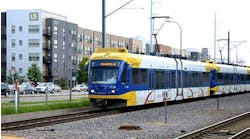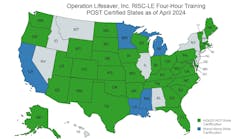Access to regional rail boosts property values across Bucks, Chester, Delaware, and Montgomery counties, however, housing prices could take a downward turn if SEPTA is forced to shrink the transit system due to funding reductions, according to a new study.
“The Impacts of SEPTA Regional Rail Service on Suburban House Prices” examines data on recent housing transactions in conjunction with regional rail service to determine the incremental value of being located near a station. The study was commissioned by SEPTA and conducted independently by Econsult Solutions Inc., a Philadelphia-based economic consulting firm specializing in areas such as transportation, public infrastructure and real estate.
The study looked at single-family house transactions from 2005 to 2012 in Bucks, Chester, Delaware, and Montgomery counties, and examined the property value premium that results from being located close to a regional rail station. It found that the average property value premium for the 754,000 single-family homes located in these four counties is $7,900, representing a total property value of approximately $6 billion. For houses in communities with higher levels of regional rail service and parking capacity, the property value premium averages between $31,000 and $37,000 per house.
“Fueled by rising gas prices, demographic changes and concerns over quality of life, there has been a growing recognition of the economic value that accrues to communities that benefit from access to public transportation,” said Richard P. Voith, president of Econsult Solutions. “House prices reveal the degree to which close proximity to transit, such as Regional Rail stations, confers benefits including improved accessibility and reduced travel time and costs to individual property owners.”
The report notes, however, that these property value premiums could disappear if SEPTA is forced to implement a service realignment plan that suspends nine of 13 regional rail lines and truncates two others over the next 10 years, as well as converting trolleys to bus and reducing subway service levels. SEPTA recently announced the plan, which will begin to go into effect next year short of an immediate infusion of additional capital funding to defer the cuts.
SEPTA estimates its backlog of state of good repair projects will grow to $6.5 billion by 2023. This includes a number of critical infrastructure needs throughout the rail network, such as replacement of bridges that date back 100 years or more, as well as the purchase of new rail cars to replace vehicles that are already nearly 40 years old and well past their useful lives. To continue safe and reliable operations at current funding levels, SEPTA will have to move forward with the service realignment plan the authority expects will leave 89,000 daily riders – or 40.7 million annually – without rail service.
Fiscal Year 2014, which began July 1, represents the the fourth consecutive year of reduced capital funding from the state, and the lowest level of capital funding overall for SEPTA in 15 years. At the same time, SEPTA has seen overall ridership hit its highest levels in over two decades, including an all-time high on regional rail last year.
With a $300 million annual capital budget, however, SEPTA’s funding levels for improvement projects and new vehicle purchases is about one-third of that of peer transit agencies, such as Boston’s MBTA, WMATA in Washington, D.C., and NJ Transit.
“The massive investment necessary to preserve our transit system in this region requires a significant state transportation bill, as is the case for most major public transit agencies nationwide,” SEPTA General Manager Joseph M. Casey said. “After years of funding disparity, we are faced with an infrastructure crisis that – if left unresolved – will force SEPTA to significantly shrink the transit system.”


